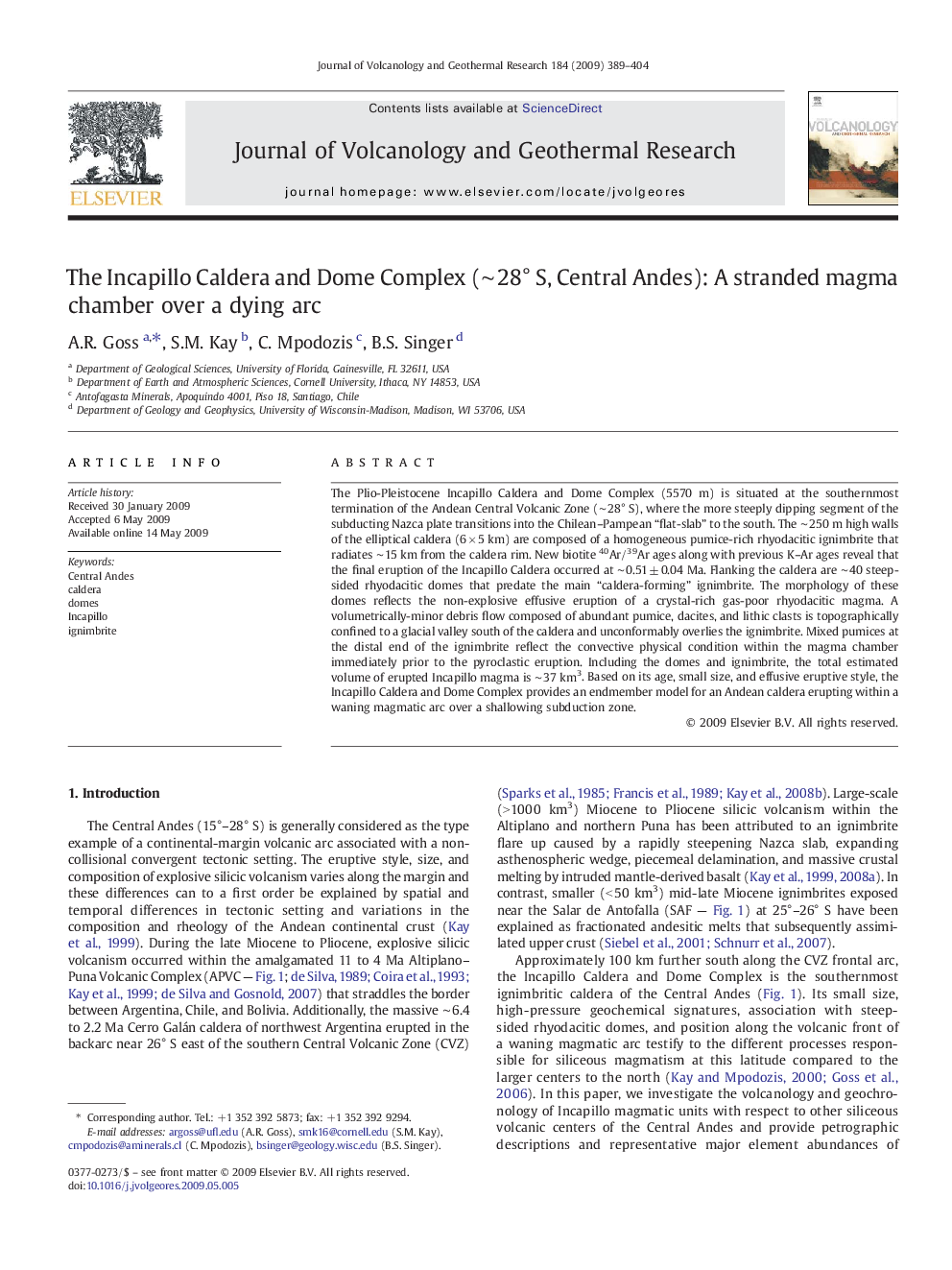| Article ID | Journal | Published Year | Pages | File Type |
|---|---|---|---|---|
| 4714257 | Journal of Volcanology and Geothermal Research | 2009 | 16 Pages |
The Plio-Pleistocene Incapillo Caldera and Dome Complex (5570 m) is situated at the southernmost termination of the Andean Central Volcanic Zone (∼ 28° S), where the more steeply dipping segment of the subducting Nazca plate transitions into the Chilean–Pampean “flat-slab” to the south. The ∼ 250 m high walls of the elliptical caldera (6 × 5 km) are composed of a homogeneous pumice-rich rhyodacitic ignimbrite that radiates ∼ 15 km from the caldera rim. New biotite 40Ar/39Ar ages along with previous K–Ar ages reveal that the final eruption of the Incapillo Caldera occurred at ∼ 0.51 ± 0.04 Ma. Flanking the caldera are ∼ 40 steep-sided rhyodacitic domes that predate the main “caldera-forming” ignimbrite. The morphology of these domes reflects the non-explosive effusive eruption of a crystal-rich gas-poor rhyodacitic magma. A volumetrically-minor debris flow composed of abundant pumice, dacites, and lithic clasts is topographically confined to a glacial valley south of the caldera and unconformably overlies the ignimbrite. Mixed pumices at the distal end of the ignimbrite reflect the convective physical condition within the magma chamber immediately prior to the pyroclastic eruption. Including the domes and ignimbrite, the total estimated volume of erupted Incapillo magma is ∼ 37 km3. Based on its age, small size, and effusive eruptive style, the Incapillo Caldera and Dome Complex provides an endmember model for an Andean caldera erupting within a waning magmatic arc over a shallowing subduction zone.
